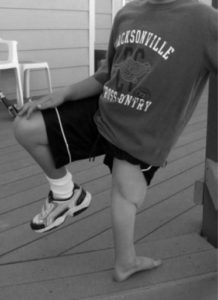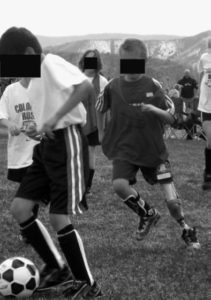Earlier I talked about a few ways that we can take out bone tumors in children and reconstruct the leg. One thing that is important to consider is whether the child is still growing and if the growth plates need to be removed or not. Sometimes, even if the growth plates can be saved, there may not be enough of the regular bone left to securely place a metal rod because there needs to be bone to put the “stem” of the rod into, much like a stake in the ground. In that case, the surgeon may opt to place an intercalary autograft or allograft.
- Intercalery = “of the nature of an insertion” which means a piece is inserted in between the ends of the bone that remain.
- Auto = self
- Allo = donor
- Graft = piece of transplanted living tissue.
- Autograft – usually the patient’s own fibula is used (small bone next to shin bone – it doesn’t bear any load or weight, so it can be removed without functional limitation)
- Allograft = a piece of donated bone from a deceased individual – when you say yes to organ and tissue donation, it’s not just heart, kidneys, and lungs that can be used! Learn about organ donation and sign up to be an organ donor here: Organ donor registry
In an intercalary graft operation, the part of the bone affected by the tumor is removed, and the graft (either allo or auto) is inserted in that place and secured. The donor bone acts as a scaffold and through bone remodeling (constantly breaking down and building up the bone), the body will grow new bonealong the donor bone and eventually the entire thing will be the patients own living bone.

Another important consideration when determining what type of surgery is whether the knee joint can be retained. An amputation that is above the knee is much less functional that an amputation that maintains the knee joint. The mechanics of walking is difficult if you have a prosthetic with a mechanical knee joint. Even limb salvage surgeries that replace the knee joint can sometimes be problematic if the patient is highly active or athletic (this is different than knee replacements for arthritis that many people have). An interesting option for these patients is a surgery called a Van Ness Rotationplasty. This surgery takes the ankle joint and flips it around and attaches it to the thigh bone so that the ankle becomes the knee joint. This is sort of hard to imagine, so here are some videos and pictures to describe it. I highly recommend watching the videos because it is remarkable how well this works.



This is a great video that describes the surgery: Van Ness Rotationplasty Informational Video
And here is a video showing patients after surgery: Patient Videos for Van Ness Rotationplasty
#ChildhoodCancer365 #morethanfour

This is actually useful, thanks.
Thanks, it is quite informative